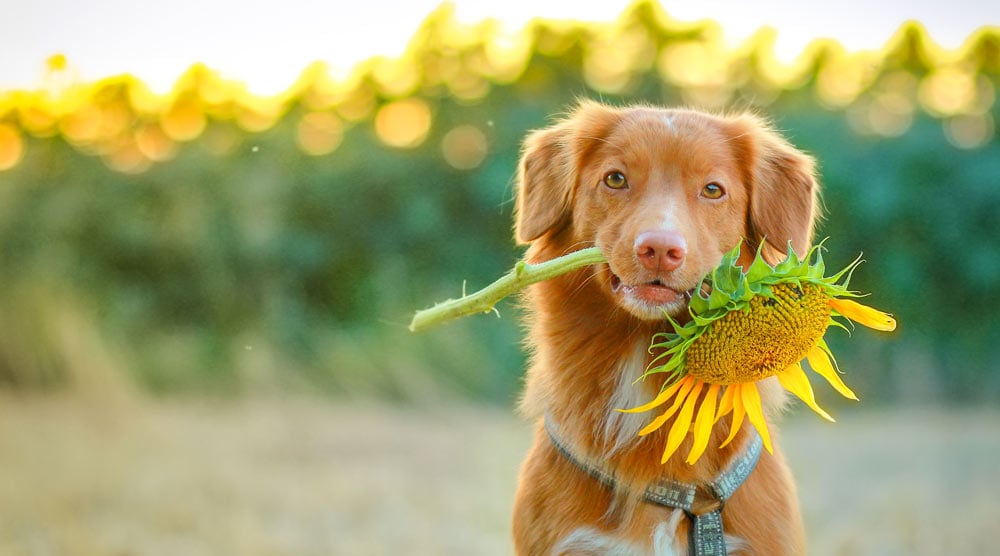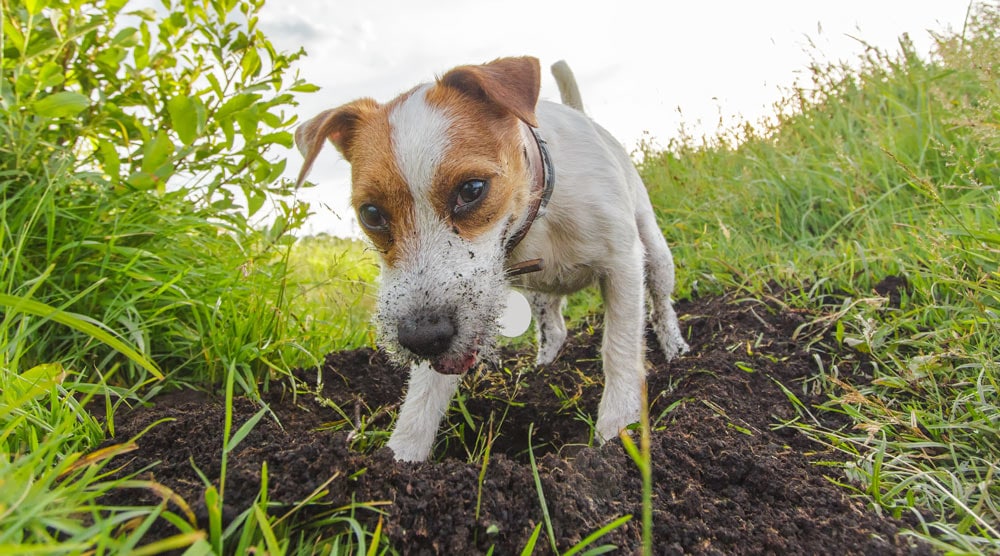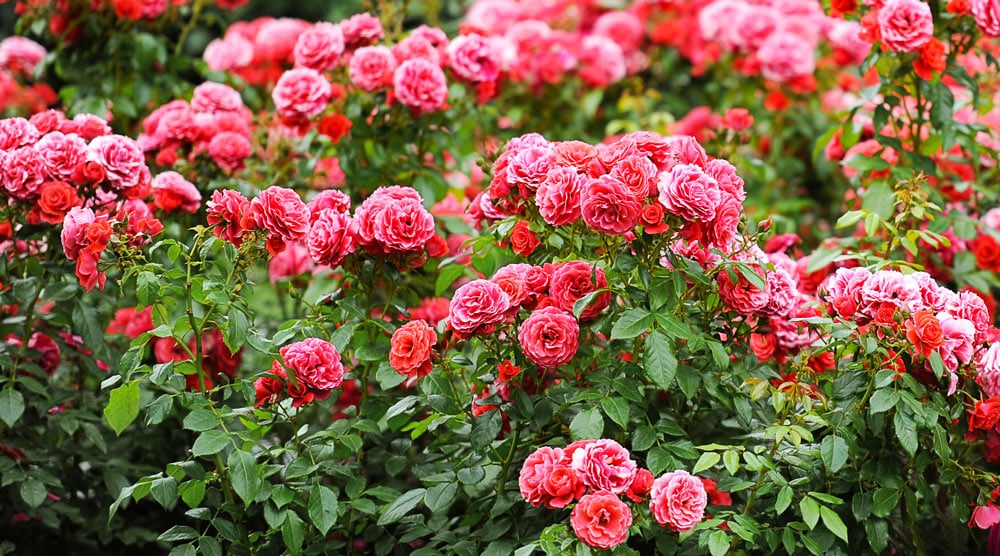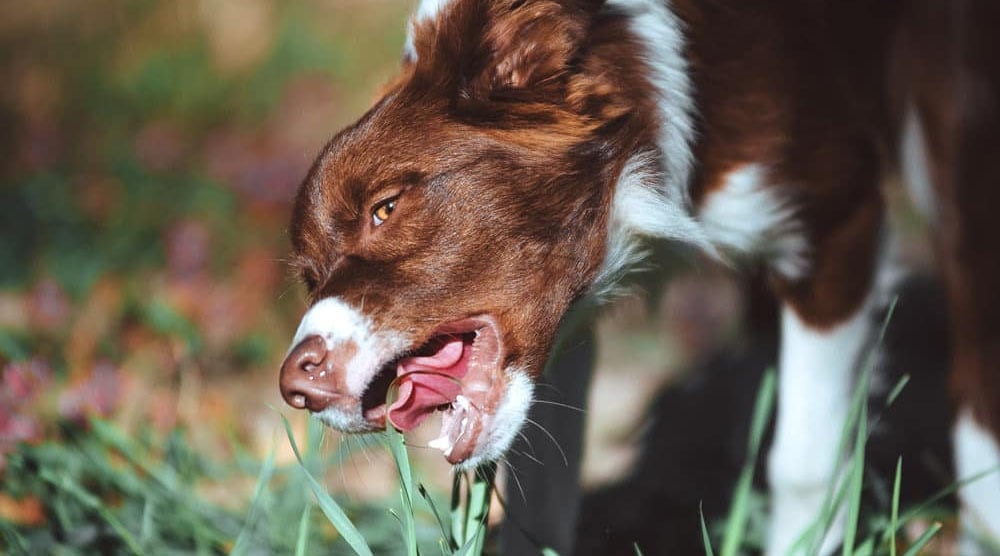A surprising number of flowers are toxic to dogs. If you love to fill your home with fresh blooms, or want to select dog safe flowers for your garden, read on for some suggestions.
Keeping your dog safe in the garden isn’t just about securing the fences and avoiding dangerous pesticides. You also need to carefully choose dog safe flowers that are non-toxic for your pet.
Many owners are surprised to learn that a wide range of popular flowers are toxic for dogs. Some can even be deadly if your dog eats enough.
This can be particularly dangerous if you have a dog who likes to explore with their mouth or dig in the borders. Prolific grass eaters could even ingest fallen flowers accidentally.
The good news is that there are plenty of dog-safe flowers to brighten up your home and garden. If you’re looking for some inspiration, check out the list below, along with some common flowers to avoid.
Tip: Want to learn more about dog proofing your home? Check out our full guide.
Contents
10 Flowers That Are Safe for Dogs (Including Both Annuals and Perennials)
Listed below are ten pet-friendly flowers, including a mix of perennials and annuals. While these flowers aren’t necessarily healthy for your dog to eat, they aren’t toxic.
Disclaimer: Do not try to use the images below for identification purposes. Any plant can be dangerous if it triggers an allergic reaction. If you suspect your dog has eaten a flower that might be toxic, or is showing even minor symptoms of illness after eating a flower, contact a vet immediately.
1. African Violet
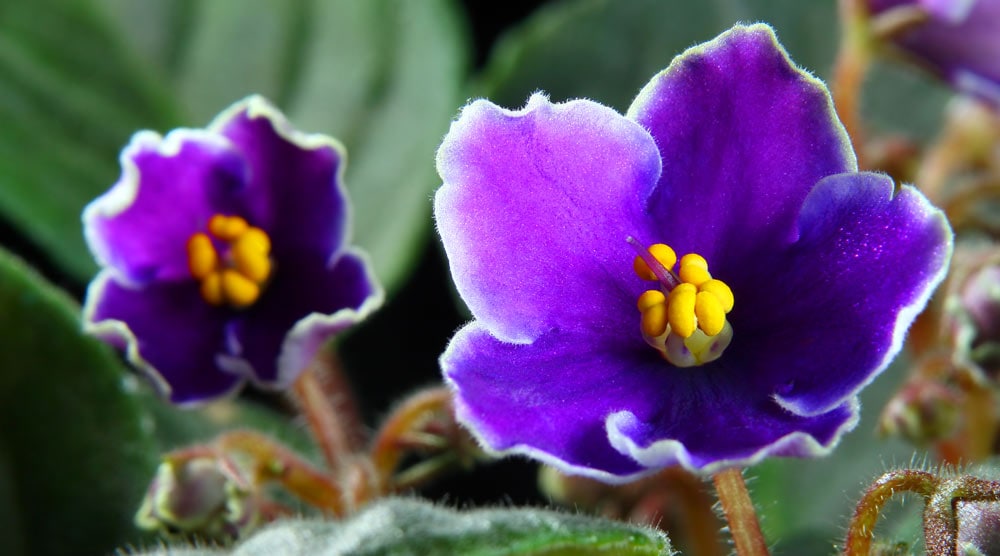
Commonly found on home windowsills, the African violet (also known as the cape marigold) is one of the most popular houseplants. They’re easy to grow and bloom throughout the year in warm, well-lit positions.
The fuzzy leaves and ruffled flowers are both pretty and safe to have around your dog. So, if you want a splash of colour in the home, this perennial could be a perfect choice.
The less common Persian and flame African violets are also safe for dogs.
2. Alyssum
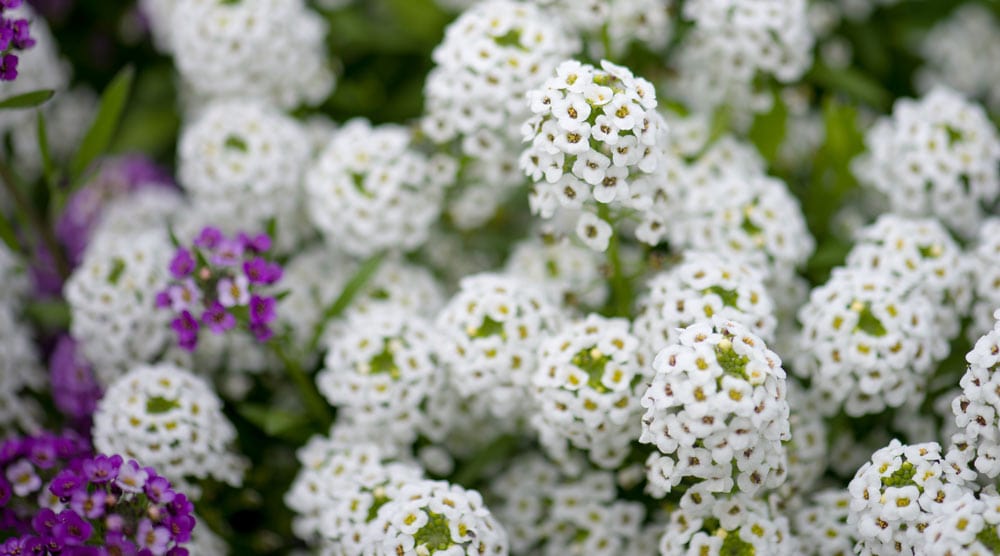
If you’re looking for a classic annual flower with a strong fragrance to add to a doggy-safe garden, why not consider sweet alyssum? They’re easy to grow and drought-resistant.
The small, honey-scented flowers grow in prolific mounds making it popular for boxes, hanging baskets and filling up empty beds. They’re wonderful magnets for bees and butterflies too. Although, you’ll need to watch your dog doesn’t get stung if they get too curious!
3. Blue Eyed Daisy
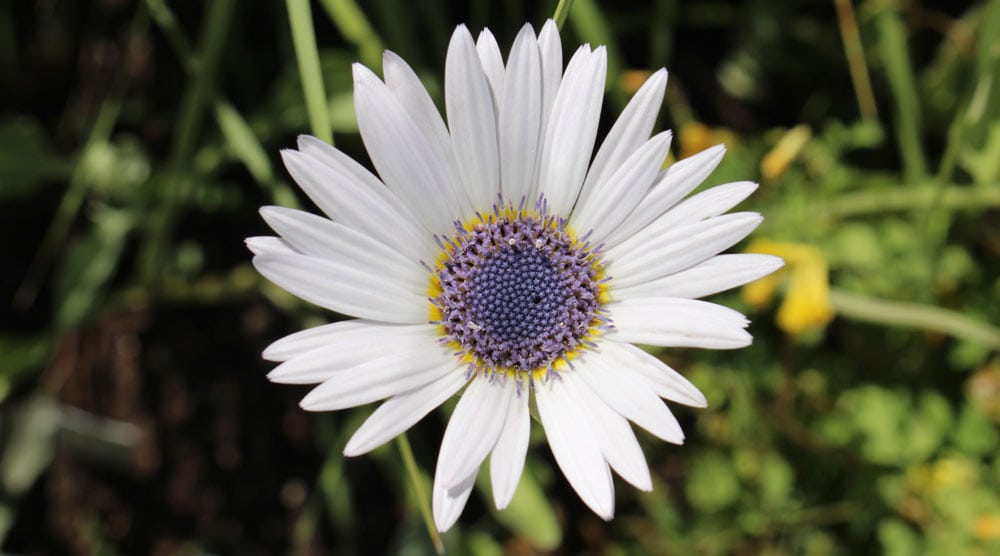
Also known as the African daisy, this flower offers an exotic twist on the traditional white lawn flower found the world over.
Available in a variety of vivid, funky coloring, with shimmering centre disks, the blue eyed daisy is safe to have in the garden alongside your dog.
These flowers are usually grown as annuals and do best in a sunny and warm position.
4. Cornflower
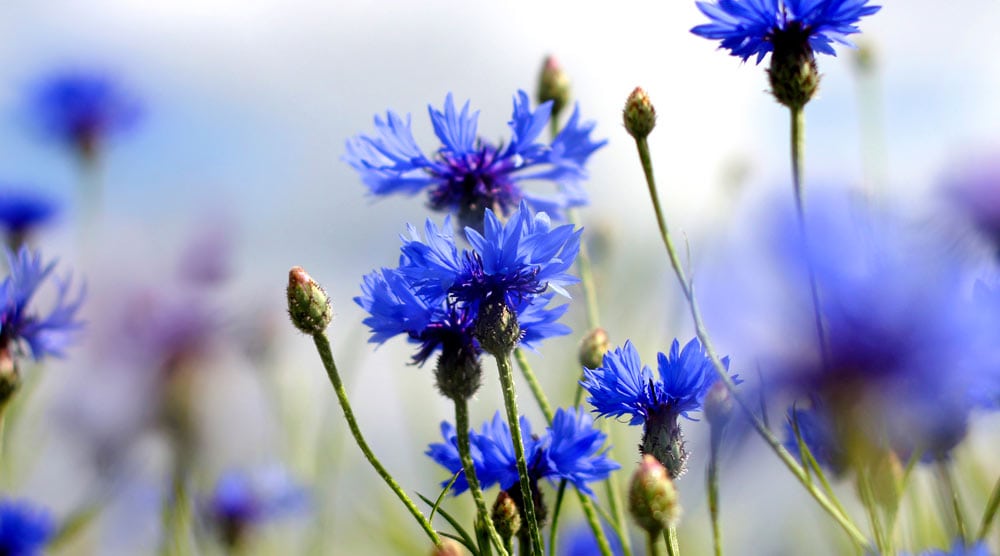
The cornflower, also known as bachelor’s button, is an annual plant with beautiful blue flowers. It’s often a popular choice to add to a wild meadow section of a garden.
With edible flowers that are sometimes added for decoration in upmarket restaurants, this is a great option for including in a sensory garden for your dog. You won’t need to worry if they have a nibble, and they might even enjoy the taste.
5. Nasturtium

A versatile and in-demand classic, the nasturtium comes in perennial or annual varieties. Their bright yellow, orange and red flowers add a vibrant splash of colour to any garden bed or hanging basket.
Nasturtium leaves, with their peppery taste, are often added to salads as an alternative to cress or rocket. The flowers have a sweet taste and are non-toxic. So, you won’t need to worry if your dog takes a bite, although they shouldn’t be eaten regularly.
6. Phalaenopsis Orchids
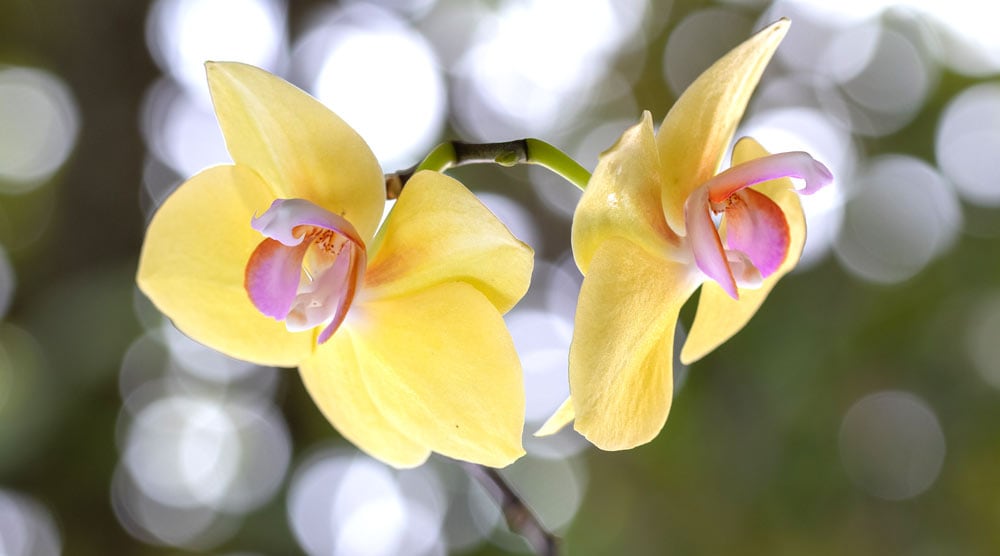
If you’re a lover of the elegant and ornamental phalaenopsis orchid, you don’t have to worry about keeping it in a home alongside your dog. Despite their exotic appearance, they aren’t toxic for our furry friends.
If you live in a temperate climate, it’s also possible to grow certain varieties of this perennial plant in your garden.
“Many owners assume orchids are toxic to cats and dogs and contact me in a fluster when their dog has nibbled on one,” says vet Dr Linda Simon. “Thankfully, orchids are known for being pet-safe.”
7. Petunia

The petunia is one of the most popular annual flowers for adding to garden borders. They’re easy to grow and bloom abundantly in the summer months, providing the temperatures aren’t too extreme.
If your dog is partial to tasting garden plants, you can relax in the knowledge the petunias are non-toxic. Plus, their slightly sticky leaves may be off-putting for your pooch anyway.
Be aware that petunias can be affected by gray mould if you don’t select a weather-resistant variety, especially if they’re subjected to persistent heavy rain. This can sometimes cause an allergic reaction for humans or dogs.
8. Roses
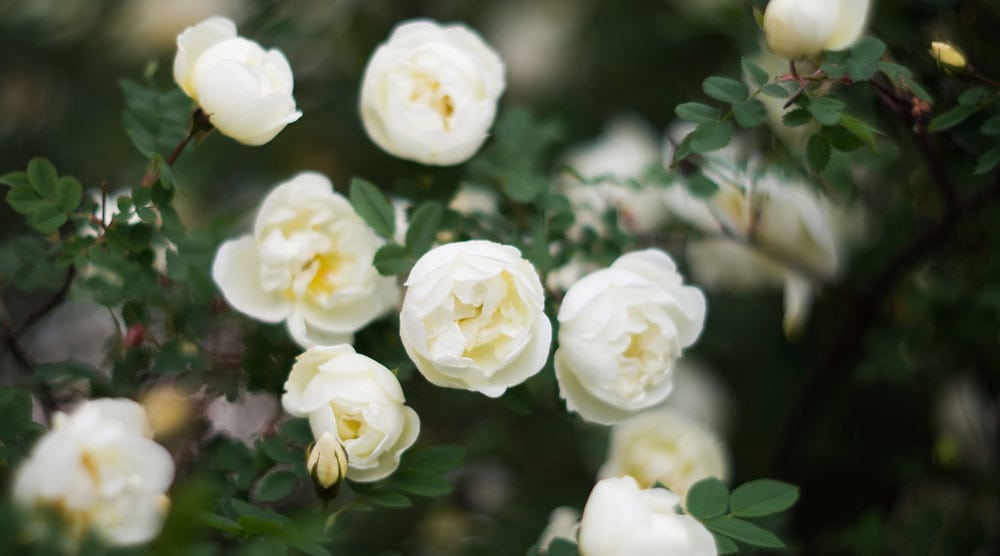
The iconic rose is the most popular and well-known flower in the world. As well as being commonly gifted in bunches for the home and on Valentine’s Day, these elegant and fragrant blooms are hardy and tend to grow well in the garden.
Given that rose petals are becoming increasingly popular to add to salads and desserts, it won’t be a worry if your dog scoops up any that have fallen to the ground in your garden.
Just watch out for the spiky thorns. If your dog is running through the garden borders, they could get a nasty injury, especially if a thorn catches their eye. These types of lacerations can lead to corneal ulcers that can be difficult to heal.
“Rose thorns are also good at burying deep under the skin and causing small abscesses,” adds Dr Linda Simon. “I often see dogs who walk on these thorns go on to develop a sudden lameness and small ‘blister’ on their foot. We can usually remove these thorns easily under sedation.”
9. Snapdragon

If you’re looking for a vibrant and eye-catching flower that will thrive in cool spring and fall weather conditions, you can’t go wrong with the snapdragon. Coming in a wide variety of colors and heights, these flowers are easy to grow, available in perennial and annual varieties, and are non-toxic to dogs.
Some snapdragons can grow to considerable heights and may need to be staked to keep them upright. You’ll need to make sure your dog doesn’t steal the stakes and try to chew on them. These can splinter and injure the mouth or throat, and even present a blockage hazard.

Care should be taken not to confuse snapdragons with the similar-looking foxglove. This plant is highly toxic to dogs.
“Mistaking a Foxglove for a Snapdragon could have fatal results,” confirms Dr Linda Simon.
“We learn about foxgloves in the toxicology section of our veterinary degree as they are so toxic to our pooches. They can cause cardiac failure, weakness, and even death.”
10. Sunflower

Who doesn’t love a sunflower? These big, bright and tall flowers are easy to grow, long-lasting, and look great when cut and added to a vase in your home.
Coming in a perennial and annual variety, they need warm temperatures to thrive.
Sunflowers are another plant that needs support to prevent them from breaking, especially as they can grow up to two meters in height. Although the plants are safe to have around dogs, make sure your pet doesn’t chew the plastic or wooden stakes.
Which Flowers Are Poisonous to Dogs?
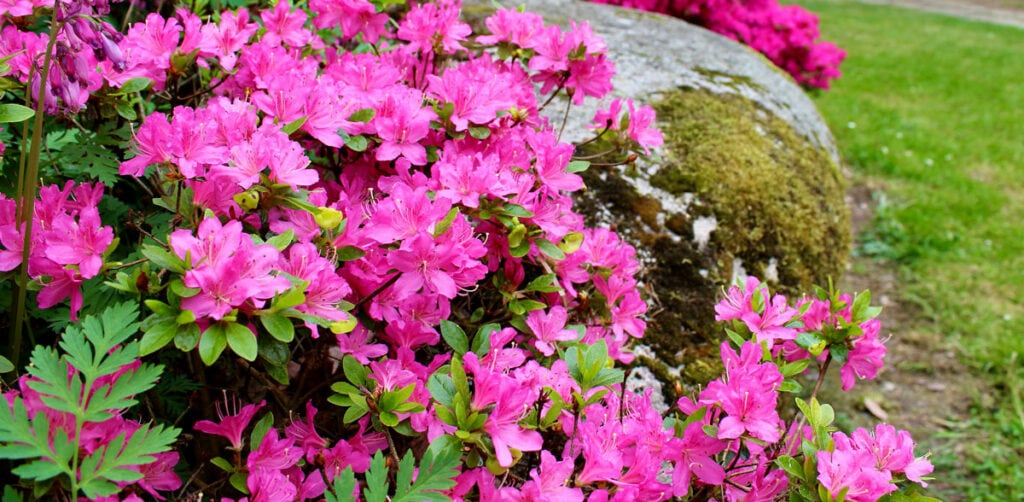
Listed below are some common household and garden flowers that can be severely toxic to your dog. This is only a small selection though. Unfortunately, there’s a large catalogue of flowers that can be poisonous to your dog.
If in doubt, you can refer to this list of non-toxic and toxic plants from the ASPCA Pet Poison Control Department for more information.
- Azalea. This popular flower from the rhododendron family can cause problems even if only a few leaves are ingested. Symptoms include vomiting, drooling, diarrhea, respiratory issues, and even comas.
- Begonias. Although not likely to cause a serious problem unless a lot is ingested, these flowers can result in your dog experiencing a burning sensation in their mouth. Consequently, they may drool excessively and could vomit. This effect is due to the calcium oxalate crystals which are toxic and potential irritants.
- Bergenia. More commonly known as elephant ears, the toxic flowers and leaves of this plant contain a burning irritant. This can cause the throat to swell so much that it can lead to breathing difficulties and even death.
- Chrysanthemum. Containing a number of recognized irritants, including a natural form of pyrethrin, these flowers can aggravate the skin. Your dog could also begin to drool, vomit and tremble, especially if they ingest a lot.
- Crocus. Although the spring crocus can cause mild stomach upsets, it’s the less common autumn variety that is the bigger problem for dogs. These can trigger extreme vomiting, and there’s a risk of organ damage, internal bleeding and respiratory failure. In some cases, the dog may also experience something called bone marrow suppression, which affects blood cells being produced in the body.
- Larkspur. Containing toxic alkaloids, this beautiful, tall flowering plant can cause muscular and respiratory paralysis. Tremors, weakness and convulsions are all common symptoms.
- Water Hemlock. Also known as cowbane, this plant isn’t sold for gardens as it’s highly toxic, for humans as well as dogs. However, It can be pervasive and easily spread from wet meadows to private back gardens. Even ingesting a small quantity can cause violent convulsions and can be fatal, due to the cicutoxin it contains.
What Are The Symptoms of Flower or Plant Toxicity in Dogs?
Some flowers may only cause a mild upset stomach or a little drooling. Others can be severely toxic and, if your dog ingests any, they’ll require immediate veterinary attention.
If you suspect your dog might have eaten a poisonous flower, don’t wait and see if they develop symptoms – get them to a vet immediately. The toxins in certain plants can be very potent and fast-acting. When in doubt, getting to the vet as quickly as possible is important.
Common signs of plant poisoning include vomiting, diarrhea, lethargy, lack of coordination, trembling, excessive drooling, respiratory issues and even changes in heart rate.
Are Bulbs Safe for Dogs?
Even if you think all the plants in your garden are safe for dogs, there could be hidden dangers in your flower beds.
Many bulbs are toxic if eaten, which can be a problem if your dog is a digger. If you have bulbs in containers filled with water, your dog could even be poisoned if he takes a drink.
It can be tricky to identify flowers in their bulb form, so make sure you dispose of any that are dug up and never leave bulbs where your dog can reach them. Some common flowers which are known for having toxic bulbs include:
- Amaryllis. Although the flower is also a problem, it’s the bulb that is the most toxic to dogs. It contains lycorine, which can cause extreme stomach upsets and could even lead to shock or a coma.
- Daffodils. One of the most common spring flowers, daffodils have bulbs that can cause vomiting and diarrhea. If a lot are ingested, they can cause convulsions and even lead to death.
- Tulips. These popular flowers contain lactones that are particularly concentrated in the bulb. Alongside irritation of the mouth and throat, it can lead to an increased heart rate and respiratory issues.

Warning: Even Pet-Friendly Plants Can Sometimes Be Dangerous
To start with, even dog safe flowers can cause an upset stomach if enough are eaten. They are certainly not a nutritional or healthy food for dogs. So, while some flowers are not poisonous, you shouldn’t let your dog eat them.
Additionally, if you’ve bought flowers from a garden centre, they may have been treated with toxic pesticides. Insecticides and fungicides are common, so it’s always a good idea to ask if the plant is pet friendly before buying.
Fertilizers can also sometimes be hazardous to dogs. Most commercially available fertilizers are pet safe, but you should always double-check before using them. Safe varieties often recommend waiting 72 hours after application before allowing your dog access, so it’s important to take note of any instructions. Plus, even doggy-safe fertilizers can still lead to an upset stomach if a lot is ingested.
If your dog can’t resist fresh blooms, supervision in the garden will be key. You could also install some decorative fencing around flower borders and provide your dog with enriching toys or a dedicated digging spot.
Summary
Many new dog owners are surprised by the number of flowers that can be dangerous to their dogs. You don’t need to make your garden or house a flower-free zone, however, as there are plenty of dog safe flower options.
Doing a little initial research will allow you to relax and enjoy the garden with your four-legged friends. Don’t forget to be vigilant for hidden bulbs, and make sure your flowers aren’t treated with dangerous pesticides.
Do you have any questions about choosing dog safe flowers for your home or garden? Please use the comments form below. You may also want to read our guide to dog-proofing a home.
